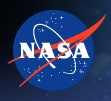NASA, Isro mull Joint Mars Working Group
11 Sep 2014
 The National Aeronautics and Space Administration (NASA), the premier US space agency and its Indian counterpart Indian Space Research Organisation (Isro) are in discussions for setting up of a Joint Mars Working Group, according to a top US space official.
The National Aeronautics and Space Administration (NASA), the premier US space agency and its Indian counterpart Indian Space Research Organisation (Isro) are in discussions for setting up of a Joint Mars Working Group, according to a top US space official.
"NASA is in discussions with the Indian Space Research Organisation (Isro) regarding potential scientific collaboration with their Mars Orbiter Mission (MOM)," reports quoted James Green, director of NASA's Planetary Science Division, as saying.
Isro's Mars Orbiter Mission (MOM) is due to enter Mars orbit about two days after United State's Mars Atmosphere and Volatile Evolution (MAVEN) orbiter reaches the Martian orbit.
Prime Minister Narendra Modi is also slated to visit the US later this month.
In a testimony to the House of Representatives subcommittee on science, space and technology, Green said while primarily a technology-demonstration mission, MOM included five science instruments to study the Martian atmosphere, mineralogy and surface features.
''With multiple data sets being collected, NASA and Isro scientists will have a wealth of information to help solve mysteries regarding the Mars atmosphere,'' he said.
''In addition, NASA and Isro are talking about setting up a Joint Mars Working Group, under the auspices of the State Department's US-India Civil Space Joint Working Group, that would coordinate our two agencies' plans for studying one of the Earth's nearest neighbors,'' Green said.
Meanwhile, the US-built probe NASA's Mars Atmosphere and Volatile Evolution (MAVEN) spacecraft, was expected to enter orbit around Mars on 21 September while only days later, on 24 September, India's Mars Orbiter Mission (MOM) would make its own Mars arrival when it enter the planet's orbit, Fox News reported. Both MOM and MAVEN had been launched in 2013.
MAVEN is the first mission devoted to probing the Martian atmosphere, especially in understanding how it had changed during the planet's history.
Before that happens, however, the spacecraft would need to burn its engines to go into orbit around the planet, and pass a commissioning phase while taking a few precautions for a "low-risk" situation where a comet would pass fairly close to Mars.
MAVEN principal investigator Bruce Jakosky, of the University of Colorado, Boulder, told Space.com, that MAVEN had been under development for about 11 years, and it came down to a 33-minute rocket burn on 21 September.
The coming decade would see China prepare a series of robotic lunar missions, Russia was preparing lunar, Venus and Mars missions, and India had plans to go to the Moon and Mars.

.webp)






.webp)






















